A few weekends ago I spent almost forty five hours looking at a computer monitor watching the PSP/SMP webcast and for the first time ever, I got bored while watching. Now, I am not here to bash the webcast and lampoon the guys on their trials. Au contraire!, the quality of the webcast continues to improve in all facets from Matty Marshall’s commentary to Steve Rabackoff’s post match interviews.

Taken from PSPevents.com
Even the actual quality of the video feed seems to be getting better as the year goes on, and for that the team deserves a giant pat on the back. Honestly, with Patrick Spohrer at the helm I am sure that everything is controlled down to the minutia of even when the staff is able to take their hands off the controls to grab a drink of water. As we all know, there are a few elements of an event that the PSP/SMP cannot control (such as the weather) however there is one set of elements that have been severely lacking this season that — in my opinion — is ruining the webcast, and thus the entire effort of the PSP/SMP/PBA: the field, and the bunkers situated on the field.
Before the season started we were introduced the new “technical snake” by Adrenaline Games which garnered mixed reviews. Some found the bunkers interesting and were eager to put some paint on them, but many were livid with the decision of Sup’Air to shrink the size of the bunkers. Personally, I feel that it was a terrible decision that, as Paul Richards from ViewfromtheDeadbox so eloquently put, showed a “lack of imagination and desperation in trying to force us into buying and using these 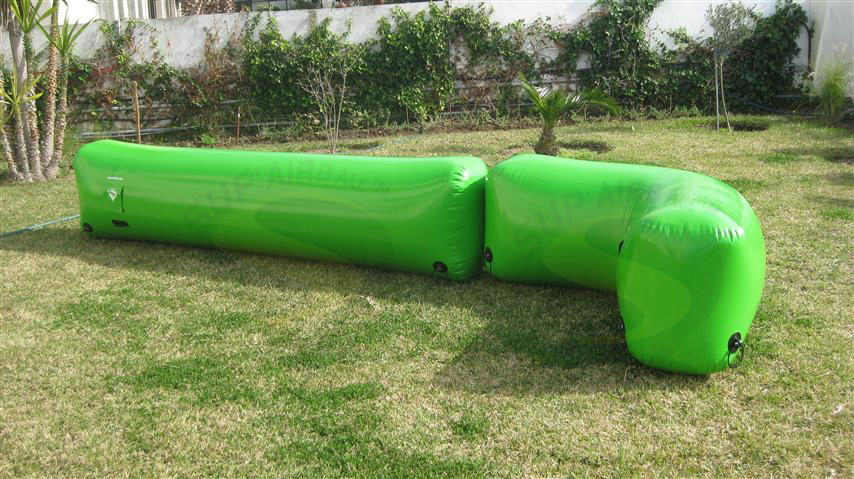 pointless changes.” It was a total money grab that forced us all to accommodate to a company that has made a living by tweaking their field packages and forcing them upon the league, which ultimately trickles down to the field owners who are in the business of sponsoring teams, or holding even a basic team practice. Also, the shrinking was not just limited to the “technical” (read, “worthless”) snake; all the bunkers shrunk a little this year. In earlier years we would easily dismiss this as the sport continuing to progress to a more athletically demanding state, but it must be noted that these changes directly go against what the PSP has been wanting to do with the fields; which is make them more friendly to older, slower, more endowed (with experience and knowledge of the game – duh) players. To do this they changed the size of the fields outward by several feet (20), but thanks to Sup’Air, these changes are completely and utterly pointless. On another note, I am not sure that the fields gaining this length promote the change the PSP wants.
pointless changes.” It was a total money grab that forced us all to accommodate to a company that has made a living by tweaking their field packages and forcing them upon the league, which ultimately trickles down to the field owners who are in the business of sponsoring teams, or holding even a basic team practice. Also, the shrinking was not just limited to the “technical” (read, “worthless”) snake; all the bunkers shrunk a little this year. In earlier years we would easily dismiss this as the sport continuing to progress to a more athletically demanding state, but it must be noted that these changes directly go against what the PSP has been wanting to do with the fields; which is make them more friendly to older, slower, more endowed (with experience and knowledge of the game – duh) players. To do this they changed the size of the fields outward by several feet (20), but thanks to Sup’Air, these changes are completely and utterly pointless. On another note, I am not sure that the fields gaining this length promote the change the PSP wants.
It would seem that if they were attempting to attract the older player they should
- increase the number of bunkers on the field,
- make those bunkers a little larger and
- shorten the field so that those players do not have to move their walkers too far.
On the playability of the new props (specifically the snake) Paul Richards wrote and predicted: “They [the snake] are damn near worthless as playable props. There is nothing “technical” about them. They will remove much of the skill of playing a snake effectively while shrinking the size of the snake at the same time.” Another prediction that Paul made was that because the new bunkers were smaller, the effectiveness of the snake would be dramatically cut and in order for the prop to maintain it’s strength more bunkers were going to have to be placed around it — which limits what you are able do with the rest of the field provided that the over all number of bunkers does not change. This has been proven true as all season we have seen bastardized versions of a “snake”. The only one that resembled a traditional snake was the Mid Atlantic Open field and it was rendered virtually pointless when compared to layouts of the past that featured a strong, healthy snake side. The best that the boys at Sup’Air have been able to do was the first layout which was used for two events. I felt that it was actually quite entertaining; thank God for those of us who are strictly spectators.
Which bring me finally to say: the 2012 PSP Mid Atlantic Open was boring to watch and the webcast will not take off as SMP/PSP/all of paintball wants it to if these terrible field designs continue. By now I’m sure some of you are starting to scoff at me and say that you had great fun playing the layout and found it to be quite enjoyable. Sure, sure — you can enjoy playing it all you want, but as tournament paintball continues down the path of being some form of a spectators sport it is going to have to find some way to keep the spectators interested and frankly this slow style of play, dictated by the layout, is not fun to watch in a live broadcast format. Slowing down the speed to 50% so that you can better see the individual gun fight ala YouTube video? Awesome. Watching people bob back and forth behind a prop in real time for one point that takes five minutes? Boring. Especially if you are watching with people who do not understand the game — and the point of the webcast is to eventually attract those people correct? It is not fun watching players get to a primary then gun fight for a full point until there is one person left. Paintball needs to have motion and the MAO layout lacked it, severely. Also, do you guys remember that the professional division plays a race to seven? If you were to take a look at the scores from this season you surely would think that it is a race to five, or even four. Points have been slow, scores have been low and if the NFL can realize that points need to be scored for a game to be considered fun to watch, hopefully paintball can.
What It’s Supposed to Look Like!
What can be done though? I think we need to look at the most exciting moments in a point, which to me are the break and the end game, and find ways to capitalize on those moments through field design. Now, I admit that I am not a player and I am not thinking about this from a playing standing point — all I am considering is what is going to look best on camera.
The break. A good field layout should not inhibit what teams are able to do off the break. The beginning of a point is the rawest show of athleticism that the sport has and seeing a player dig to the snake, the 50 A or the corner is exciting for anybody. Almost everybody has played dodgeball before and watching a player streak out to the sides instantly creates a familiar feeling of anxiousness, knowing that you can be hit at any point in time. I realize that there are always going to be stronger bunkers on a particular layout, but after re-watching the finals match it dawned on me that I had only watched maybe two or three different plays, repeated and recycled. There was hardly any variation on how the teams were playing and the layout was such that it was almost pointless to take any other bunkers than those that were popular.
In the gallery posted below are three different break plans for the Mid Atlantic and Phoenix Open that Houston Heat employed. Notice the variation that the Phoenix field allowed for, where as the MAO layout was rather limiting.
“But Lawrence, where is your proof that this is all because of the snake bunkers?!” Take a look at the last playbook article I wrote for the Chicago Open. Infamous played the exact same way: one or two game plans, tweak them oh-so-ever slightly. Did we have this problem with the first two events? No, not really. Teams did take the familiar bunkers, but even then we were seeing new routes being taken every few points. A new wrinkle here and there.
After talking with Paul Richards, coach of Tampa Bay Damage, he made another brilliant point: through the mid and into the end games, field designs should promote the taking of territory and reward aggressive play. The last two event layouts have done nothing of the sort and instead promote long-range gun fights. And here is where we must take the PSP to task because while they do not (although they should) control the size of the bunkers, they do control the size of the fields.
The twenty feet added to the field has, again, limited what teams can do and has negated what could possibly be a good field design at smaller dimensions. Why should a team have a corner runner when it is unlikely that he can make it there, even if the bunker can potentially dominate a part of the field? Teams would rather have this player stay alive and find a more inventive way to control that area, but is that really what we want as spectators? These problems begin to compound during Sunday play a teams are less willing to attempt stunning moves because a loss of one player can mean the difference in

Provided by Rbgmagazine.com
making it into the finals match, or not. The risk to reward factor is balanced too far toward the ideology of “take the easiest spots and minimize all risks.” This will not garner spectator interest. Take the football player Brett Favre for instance. Favre is considered one of the best quarterbacks of all time, but part of the reason for that is because — at times — he made very high risk decisions of where to place the ball. Sometimes the defense had the upper hand and came down with an interception, other times his offensive teammate would make a spectacular play and Favre would be the hero. Infact, Farve still holds the “Most Career Interceptions Thrown” stat line. The point is, there needs to be a balance of risk to reward in any sport and for paintball, it needs to be more on the opposite side of the spectrum to where it current sits.
In a recent edition of “The Real Deal” podcast that Matty Marshal conducted with Tampa Bay Damage manager, Joey Blute, Joey said: “We do not play a particular style of paintball. We play to win. Whatever the field dictates is what we do. If the field says we need to run down one side, we’ll run down the one side. If the field says that we need to lock this down; we’ll lock it down.” He’s 100% dead on, and this directly leads me to believe that proper field design is possibly the most important aspect of the game from a spectators vantage point.
I am of them opinion that Sup’Air has the PSP in a vice that is undermining, arguably, the single most important project ever in the sport of paintball. There is simply too much money at stake for Sup’Air to take such cavalier actions without consulting the PSP, who should completely strip Sup’Air of their field creation duties and create them in house. On the flip side, how can the PSP in good faith take designs from a third party source and trust them 100% with this most crucial part of an event! The PSP is currently the international leader in tournament paintball and these details should concern them as much as finding a location for their events.
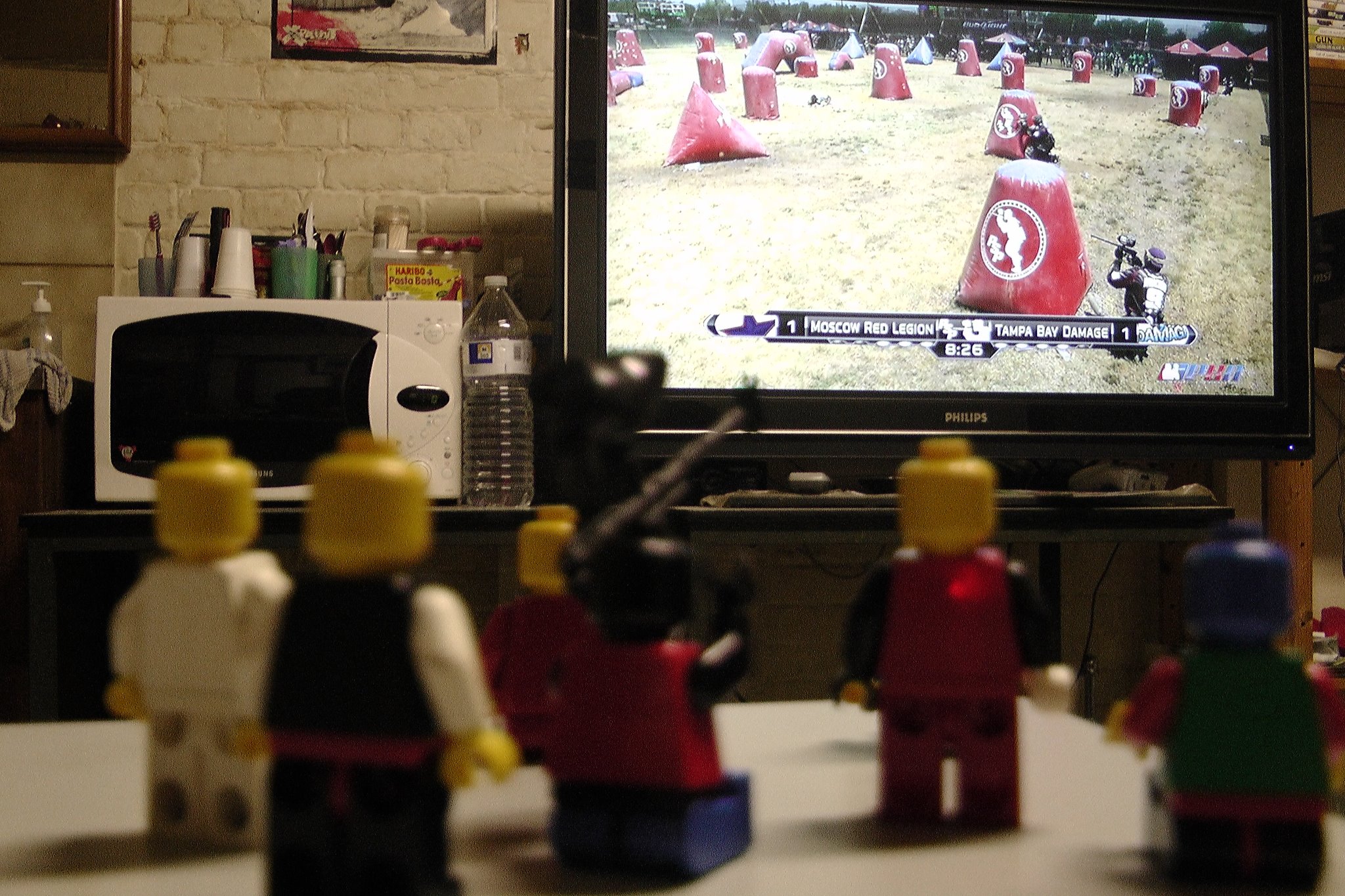
Taken From PSP Facebook Page
If the players eventually want a true spectator base, the game is going to have to begin to cater to them and their needs; and at the present rate, those spectators and fans that we are all dreaming of will never come to fruition in their full capacity. It is vital for all of us to remember that the “watch-ability” of a sport largely falls on the viewer being able to tune in and enjoy the action quickly without any knowledge of the game. We should not be catering the game to the connoisseurs of the sport — it will never work. And we all need to remember that it is perfectly normal for a sport to modify their rules or game play to suite the spectator. American football has done it with their rules protecting the quarterback; basketball did it by adding a shot clock; the tennis world is currently in discussions to ban players from grunting during a match in order to make the game more spectator friendly. Interestingly, Sup’Air played a large role in the late 1990s to introduce airball to the world which was supposed to be a more spectator friendly form of paintball! Why has the innovation suddenly stopped, at the most critical of times?!
Rumors abounded before the season that the PSP had no idea that this was happening and for that they should not be blamed, outside of not regulating their relationship with Adrenaline Games. Luckily for Sup’Air, they can — and most likely will (again) — change for the 2013 season.
We are begging you Sup’Air: please, be innovative; be crazy; be completely out of this world. But whatever you do, dont be as boring as this season has been.
Sources:
http://viewfromthedeadbox.blogspot.com/2012/02/examining-new-snake-props.html
http://viewfromthedeadbox.blogspot.com/2012/04/mysterious-shrinking-field-kit.html

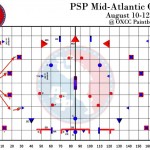
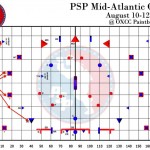
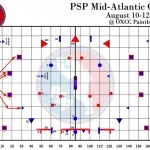
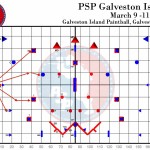
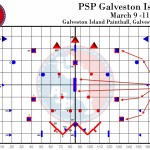
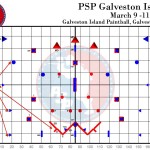
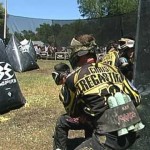
I completely agree, but I would primarily shorten the layout back the the 2010 lengths and add slightly more/bigger bunkers, they took out the bricks and 2 doritos and replaced them with crappy little A’s. This forces the field designers to put mayans, cans, and aztecs on the dorito side that should be used elsewhere
Awesome article definitely opened my eyes. Keep up the good work.
Bring back 10-man. Entertainment at it’s finest.
^^ XD
This needed to be written. I'm in total agreement, I don't want to watch five separate gun fights, I want to see athleticism.
Article title is a bit misleading, isn’t it?
While I wouldn’t disagree with the point, the real issue at stake, in the author’s opinion, is how fields and field kits are designed, which only has a certain amount of trickle-down to the PBA webcast.
I can already hear the backlash from the hardcore ballers; "We don't play for the crowd!" But never the less, they do, and should for the sake of legitimizing the sport. Awesome article, well thought out and well presented. Kudos man.
You know what they call a game that is played without concern for an audience, a hobby!
The NPL plays Speedball in its truest form. The 2012 National Championship that pitted the Nevada Mustangs against the Washington Reds recorded an average play time of just 65 seconds.
In just 24 minutes, 22 plays were witnessed with the Washington Reds having 13 Offensive Flag possessions and just 9 Defensive stands, while the Nevada Mustangs were held to just 9 Offensive flag possessions and 13 Defensive stands.
Final score was 4-2 Mustangs decided in Overtime.
As a long time PSP player I really feel like making the bunkers smaller and smaller is making the game less fun and less fluid. Movement and strategy is the most interesting part of paintball IMO. I don’t think the points have to be quicker necessarily as long as there is more movement and bigger bunkers. I also think that Snake side coaching is damaging paintball, it is making the game more robotic and less about experience.
You want bigger bunkers and lots of them, play the NPPL.
I play CXBL but have played PSP D1 –
PSP should keep the extra length of the field, you guys can actually run-and-gun corners @ 12.5 with the 20ft which is awesome and something that can’t really be done with the old shorter length.
The smaller bunkers this year I’ve felt have really been killing the game, slowing everything way up. Bring back big bunkers and put most of them at the 30s/40s/50s.
limit the amount of paint players can take on to the field. Less time with lanes locking down players and preventing “movement” of the “small” bunkers because there are so few on the field.
How about we abandon the fact that PB will never be enjoyable to watch on TV. Its barely enjoyable to new people watching live at a field even when they have a son or daughter playing.
movement, strategy, scoring points… sounds like the new National Paintball League format…
“Aw
I was thinking ow to make the game more active, with more movement and giving all players the same ammount of paint, no matter their postition, would be a good start.
Nori, We will continue to move the Sport into the limelight for audiences everywhere to enjoy and since we created and instituted the ‘Live Flag’ format in 2009, spent 2 years refining the format rules, and played our first competitive season in 2012, we are on the right track.
The Live Flag central focus format ensures that spectators can easily understand the goal of the game – to advance the flag! Since there is only one flag on the field and that flag is actually carried by an offensive player, everyone knows who to watch. That is not to say that the other non-flag carrying players ‘gunners’ are not important, but that everyone knows what has to happen to be successful.
The 2012 Championship recorded 22 plays in 24 minutes with only 4 plays resulting in a score, sound boring – with play times averaging just 65 seconds, it was a defensive lock down until the second half when both teams made adjustments that put points on the board.
i’ve emailed this before to the PSP: Let the fans create and submit field designs. Let a public vote take place of the best ones PSP liked (or just let PSP pick a winner) and let it be the field layout for WC.
I’m sorry, but I disagree.
Building fields is not easy, and many ideas look awesome to the untrained eye, on paper – and then play terribly…. I learned that the hard way 😉
What any league needs, is a really good field designer, who is given a game philosophy by the league as his guideline, and then goes and submits a few designs to the league, which in turn decides what is best for the league.
I’m pretty sure there will be a 2013 upgrade kit, at least for the Millennium Series.
I was contacted a couple of weeks ago, by a local distributor, saying they are currently gathering orders, to do a bulk order of the 2013 upgrade kit…
I agree with the article, though I have to say, it should really be the PSP telling Adrenaline Games what bunkers they want – not the other way around.
All that having been said, I envy the PSP players….. you have the A and the Mini As, both of which are very playable bunkers, for players of all shapes and sizes, while us poor europeans have to do with the worthless M, and the even more worthless Mini Ms.
excellent article! This was really entertaining to read, and made complete sense. Keep it up!
Interesting reading.
And I agree on all of it. Make the fields more interesting. Close off shooting lanes with bunkers so you have to move up to make kills.
And two more things that would speed up the game.
Time limit. Bring back the 5 minute limit. So each point is maximum 5 minute or no score. That will force agressive play.
And what about holding the layout a secret untill the day before?
That would stop the top teams to learn all the lanes and blins shots. And would bring out some more exeprimental plays.
Consider the National Paintball League format that limits play time to a maximum of 2:15 seconds for the Offensive Flag carrying team to score or give up the flag to the opposing team for their offensive play.
Play Local. Win National.
For Cup I held a party at my house, I invited many paintballers…and many NON paintballers. All came over, we grilled up some food and I put the webcast on the big screen. In all honesty….the long drawn out points really made it boring quite often to watch (even to me..a tournament baller! All i DO is watch pb vids and ball) . My girlfriend who has watched me play countless times was even MORE bored. And the friends i invited over who didn’t fully understand paintball…well lets say I had ample time to explain the rules to them….
As a snake player, I will also say…the 2012 snake is TERRIBLE. The snake is one thing I still like the NPPL over PSP for….
The webcast its-self is top notch. Each event they bring new things to the table to make it easier. Phoenix they showed bracketing by using team logos in a clear and understandable way. Cup they put in the elimination photos on the sides of the screens with their number and who they were shot by.
I am quite impressed this season by PBA, i truly hope the rumors are not true of them cutting the project. PBA is that chance, that sparkle of hope of bringing paintball back to the popular masses. I TRULY believe that. Like I said.. i threw a party..where people who DON’T know paintball, watched and did enjoy the coverage of TOURNAMENT PAINTBALL. This isn’t the Super Bowl we are talking about here..this is PBA ladies and gents!
Great article. The new field length is the villain. Just too much room, if they just brought back the old dimensions it would be a blood bath again.
The NPL format instituted these changes last year ensuring that the game has a central 'live flag' focus for fans to focus on, challenging players to ensure athleticism is rewarded, and time limits were instituted to ensure players and the fans are not bored – ultimately forcing aggressive moves and play.
“shorten the field so that those players do not have to move their walkers too far.” . Just to let you know, when I read this, I laughed so hard that I spat out my tea…as 42 year old…so not THAT old…I TOTALLY!!! agree thats what I would need.